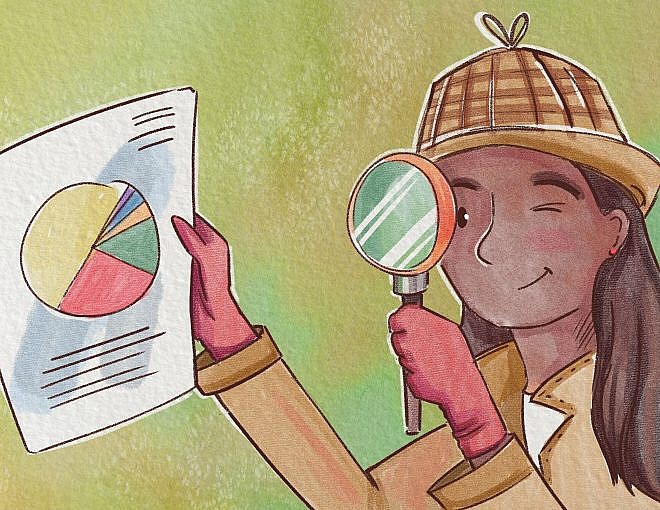Your team invested a lot of effort into building self-service data tools, but your stakeholders aren’t using it as much as you hoped, or in the ways that you hoped. User research best practices can help you understand your users’ pain points, encourage usage of your data projects, and build strong relationships with your stakeholders.
Treat your data products like software products
Every data team has a range of products and features. Dashboards, reports, forecasting tools, self-service data platforms, and externally-facing data products – in each case, you built a tool that you hope users will be able to use independently in order to accomplish their goals. How do you make sure that you build what your users really need, and that they get the most possible value out of those products?
Much like data teams are borrowing best practices from engineering and product management, we have a lot to learn from UX research and design teams. Building products that work for your users – or improving the usability of existing products – starts with research.
Good research humanizes users and improves outcomes
User research methodologies enable empathy. They help you understand your users, their needs, and how to meet them where they are with tools that solve their problems. While you may have hunches about why your stakeholders are not using your data platform as you expect, good user research empowers you to challenge those hypotheses and shed light on the unknown. Data teams design and build solutions for users with very different skill sets and perspectives – different from the data team, and often different from each other. Focusing early and often on getting user feedback offers three huge benefits to your data team:
- Reduces risk. Understanding users’ problems up front increases the likelihood that your work will be impactful and effective. This research can help shape your roadmap or product plan to focus on solving the problem users really have, rather than creating what you believe they need. With all the effort your team puts into building out a data platform, spending some time to get early signals will help keep that work focused on the most valuable projects.
- Add context. Depending on your data product, you may have some usage data to draw from. For example, with many self-service data platforms, you can see how many active users log in or view a report weekly. You may also have some word of mouth feedback (for example, the sales team really values data, while the operations team doesn’t use it or trust it). User research gives you the context around those data points to understand if and why they are true.
- Build relationships. User research helps you build great relationships as well as great products. Spending time understanding what types of users you support, what is most important for them to be able to accomplish, and what skills they bring is a super power for your team. It will help you improve better products for them, but it will also help make all of your interactions more productive.
One of the most critical skills to be an effective researcher is the ability to set aside your own point of view and have empathy for your users. As practitioners, we often have very strong perspectives on the best way to accomplish things – many of us wish data didn’t live in spreadsheets; we have strong feelings about pie charts; and we really, really care about rigorous methodology. But when you are trying to solve a problem for your stakeholders, sometimes you need to ignore your own perspective and really listen to what your users are trying to do in order to come to the best decision overall. Sometimes you can integrate your perspective to come up with an even better solution to their problem. But sometimes, the needs of a situation dictate a solution that is sub-optimal from your data integrity point of view or your Tufte-evangelist point of view. Leading with empathy and understanding, and questions instead of answers, helps you get to those solutions more quickly.
Launch user research projects when stakes are high
While strong product teams constantly leverage user research to improve their products, for now, most data teams don’t have the resources to engage in research very frequently. There are two key moments where this process can have the biggest impact:
- In the design phase of a project. When you are solving a new problem for your users, or dramatically changing the solution, user research can help ensure your solution is relevant and successful. When you are considering adding or changing tools, or creating a new data product, ensure you really understand the user pain points you are trying to address. When you think you have a solution, test an MVP with real users to make sure the solution works for them. The larger the project, the more valuable this research will be in focusing effort where it truly matters.
- When usage isn’t where you want it to be. If you’ve already launched a product, but the team isn’t adopting it the way you thought they would, research can help you evolve the product. If you invested significant time and resources in a BI platform intended to be self-service, but users still start with asking your team a question instead of using it, that’s a good time to start asking why. You can understand what is limiting adoption and what about the tool isn’t serving them well.
Your team exists to help your organization derive more value from its data. The more effectively your stakeholders can use the products you’re building, the more you can scale your impact – so focusing on usability of key tools can drive value across the business.
Yes, you can draw conclusions from a handful of data points
Data teams tend to spend a lot of time thinking about sample sizes and significance – so it can require a real perspective shift to embrace the small datasets generated by user research. Even with surveys, you will only receive responses from a minority of your users, who likely number in the tens, hundreds, or low thousands. But working at this more human scale is critical to getting the depth of insight you need to really understand how to make your products work for your users. Yes, a sample of five can be enough to draw useful conclusions that can improve your product.
Bring your user research mindset into the everyday
If structured research sounds overwhelming to your team at this point, at a fundamental level, borrowing best practices from UX researchers can simply entail bringing a “user research mindset” to all interactions with stakeholders. Show empathy for your users and be flexible in your approach. When a user comes to you with a challenge that seems impossible, respond with wanting to know more about why instead of (or at least before) you say no.
While many UX research teams have to find users outside of their organization to understand their needs, analytics teams have the benefit of working very closely with their users on a daily basis. If you can integrate this attitude of “what are my users trying to accomplish, and how can I make tools better for them?” into your regular workflow, you’ll make continuous incremental progress on crafting a more durable data platform that meets and exceeds your users’ needs. Formal user research projects are just icing on the cake.
In our next post, we’ll dig into research methodologies, and how to get started. In the meantime, we’d love to know more about whether your team applies user research methods to your data products, and what some of your biggest questions are about usability that you would like to answer with research. Hope to hear from you in the Slack channel!






